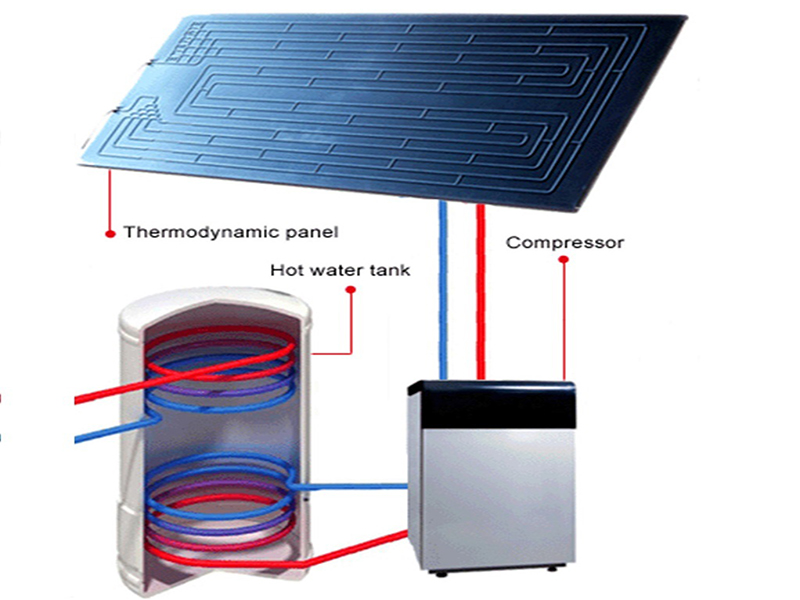 Thermodynamic Principle of a Heat Pump
Thermodynamic Principle of a Heat Pump
A heat pump is a machine that transfers heat from one place to another. It acts as an air conditioner or a furnace. The process of this machine involves moving air from outdoors to indoors without using a lot of energy. It is able to produce hot and cold air depending on what temperature is desired. On hot days, the heat pump pulls in cold air from outside and is able to cool air inside homes or cars. When it is cold out, it is able to do the same thing but pulls in heat from the air outside to warm environments.
The Thermodynamics Solar System joins two incomplete technologies, the heat pump and the solar thermal collector.
Heat pumps are quite efficient equipment but the heat they produce from their renewable component varies only according to changes in the temperature of the environment. Thermal solar collectors are the best source of heat on hot and sunny days but they are totally inefficient whenever there is no sun.The Thermodynamic Solar Technology manages to surpass the limitations of both the heat pump and solar collector technologies.
Through the cooling liquid (R134a or R407c) which covers a closed circuit, the liquid goes into the solar panel and suffers the action of sun, rain, wind, environment temperature and other climate factors. During this process the liquid gains heat in a more favourable way than a heat pump. After this stage, the heat is transferred to an exchanger with the help of a small compressor, which heats the water. The system works even when there is no sun and it even works at night, providing hot water at 55C, day and night, hail, rain, wind or shine, unlike the traditional solar thermal system.
The energy consumption of the system is basically the same as a fridge compressor that makes the liquid circulate. There are no ventilators that help the evaporation process, or defrost cycles, which imply unnecessary energy consumption, unlike what happens with heat pumps.
Post time: Sep-28-2022

